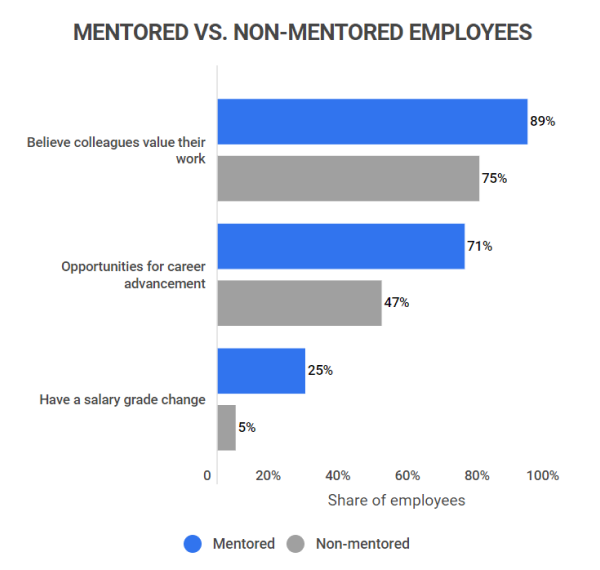How to kickstart 2024 by focusing on career path development

What’s your staff turnover rate? If it’s below 43.9%, you’re bettering the average turnover rate in the US in 2022. That’s an increase of almost 10% since 2019. Given the high costs of recruiting new staff, you want to try and keep that staff turnover figure low.
One possible way of achieving those lower figures is to make sure you have a good career path development strategy in place. Let’s find out more in this essential guide.
What is a career path development strategy?
Very few people want to remain in the same role for their entire career. A career path is a long-term plan that an employee may expect for their working life. It may involve promotion through the ranks of their current company or looking at a path that takes them into other companies.

Having a good career path development strategy means that you are recognizing the aspirations of both your current employees and your candidate pool while striving to retain their services and talent.
There are several advantages to having a robust career path development strategy:
- Lower staff turnover rates
- Higher levels of hard and soft skills in your workforce
- Better employee satisfaction levels
- Reductions in the costs of your recruitment process
- Better talent within your business
How to create a career path development strategy
With so many potential benefits, it makes sense to have a good career development strategy in place. Alongside deploying the best HR tools available, a solid strategy can truly benefit your entire company. But how do you create that strategy from scratch?
1. Assess needs
The foundation of any plan has to be your organizational needs. That is going to determine what form any career development path will take. Consider the following questions when gauging needs:
- Future plans. Do you plan on growing and expanding your business? What form will that growth take and will it involve the need for new roles? If you’re using a payroll for a small business system, will it be scalable to meet workforce growth and will your current team have the skills to deal with that growth?
- Skills. What are your current needs for hard and soft skills? Will that change in the coming years?
- Technology. With so many developments in technology such as automation, you need to consider whether staff will need extra training in these areas.
2. Listen to your staff
You may have identified your needs, but what about those of your staff? Listening to your staff is an integral part of building a career path development strategy. This can happen at performance reviews for existing staff and during the onboarding process for new hires.
Asking your staff where they see themselves in five or ten years can give you a better idea of what you should be doing as an employer.
For example, you may have an employee who is working with your call tracking system. However, that employee hopes to have had at least one promotion in the next five years. How do they achieve that goal? What training, mentorship, or other factors do you need to put in place to help them?
3. Identify specific training needs
You have to find a middle ground between what your employees want and what your organization needs. You also need to identify which employees need specific training to further their careers while benefiting your business. This step can also identify how your employees want to learn: do they prefer virtual courses or on-the-job training?
You should be looking at what each employee currently offers in terms of skills, knowledge, and ability. By identifying those factors, and keeping one eye on what you need as a business, you can see where training will benefit both parties. Get feedback from your workforce through surveys, one-to-one interviews, and an audit of needs. Remember, you need to focus not only on current requirements but also on future ones.
4. Offer mentorship opportunities

Career development does not just have to be about formal training. Good mentorship programs can also be effective when it comes to progress on their chosen career path. If you have identified someone you feel has managerial potential, then pairing them with an existing manager as their mentor is an ideal tactic.
Mentorship can be a great way of encouraging better communication and collaboration. You could also consider setting up peer support groups where employees can come together and discuss things as well as offering support to each other. Any mentorship program you implement should be goal-focused and should also look at sharing knowledge.
5. Customize career path development
Each business may have different needs and each employee will have different aspirations. Of course, you also need to consider your learning and development (L&D) budget but you should be customizing your training to meet both your needs and those of your staff.
Look at what areas need what strengths and then customize your training program to suit. For example, with tools such as Paylocity payroll software solutions constantly evolving, you may want to consider both training and refresher courses. You should also consider the following factors:
- Technology. Look at how you can use technology to strengthen career development. Can you implement the use of learning management platforms? Could you use webinars to teach employees new skills?
- Onboarding. When you have new hires, your onboarding process should be perfectly placed to see how that hire wants their career to develop.
- Metrics. You need to be able to measure the success of any L&D program, both from your employees’ perspective as well as that of the business. Setting milestones can help see how well people are developing.
Takeaway
Having an effective career path development strategy can be a win-win situation for both you and your staff. You can keep your best talent and also attract new stellar candidates when needed.
All in all, this means significant cost savings and a more productive organization. When your staff knows that they have a career path that offers progress and promotion as well as learning new skills, they’ll be more likely to stick around for the long haul.
Author
Darcy Dario
Darcy is a learning expert at EdApp, a mobile-based training platform that helps businesses bring their training solutions to the next level with democratized learning. She has a background in content writing and specializes in eLearning and global communications. When she’s not writing SEO-optimized content, she’s trying to finish her video game backlog.
